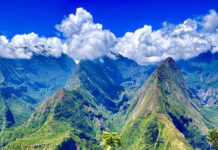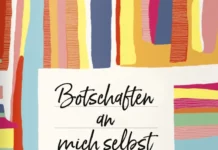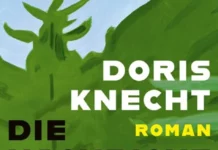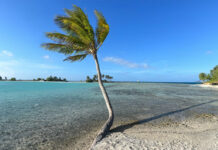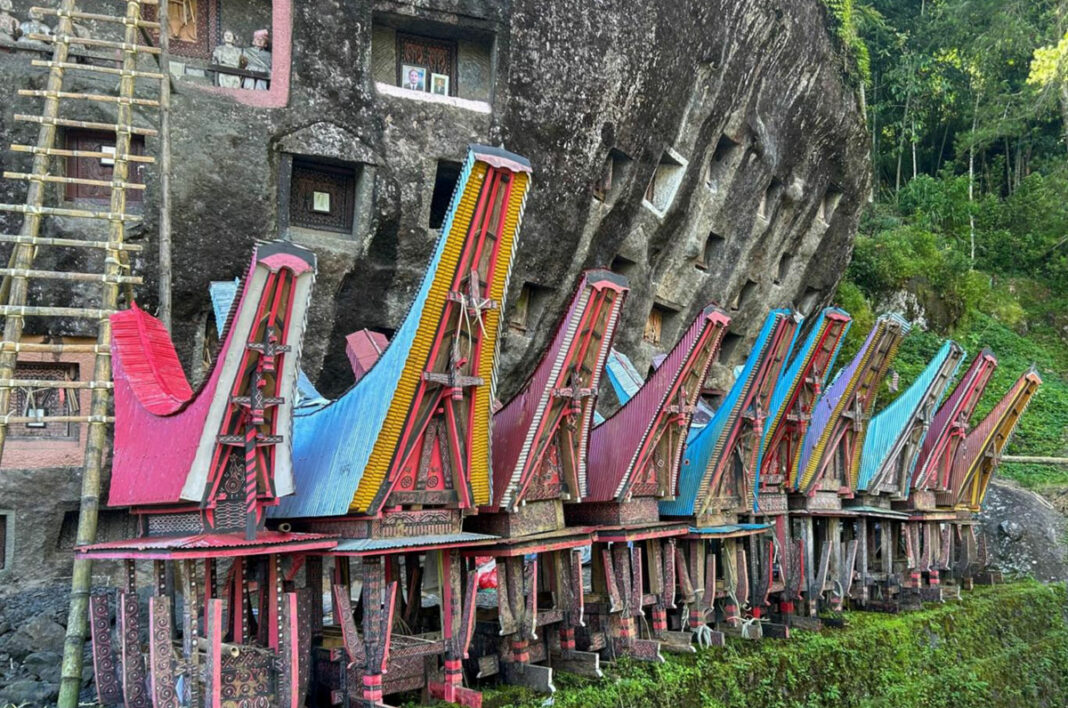The Toraj people once came to Sulawesi across the South China Sea and settled on the coasts. Slowly they retreated into the mountainous interior, displaced by immigrating peoples. They have preserved their centuries-old traditions and typical architecture.
The wooden houses have roofs, whose curved shape is reminiscent of a boat. The main house is the living space. The smaller, identical house opposite is used as a rice storehouse, as people here live from growing rice. The terraced rice fields, neatly laid out in the mountainous landscape, have a lush green colour. Boulders, which look as if they have been scattered randomly across the fields by a giant, break through the man-made fields.
„Beautiful,“ you think as you drive along the road winding through the mountains. „Tedious“, think the field workers who fulfil their every-day duties here. But if you own a rice field that has been in the hands of one family for generations, you have an income and can get by. Our guide, Lisa Soba, who has published a wonderful book together with a National Geographic photographer, knows all the photo spots and every detail of the history of the Toraj people, to whom he himself belongs.
If you own a rice field, you have an income
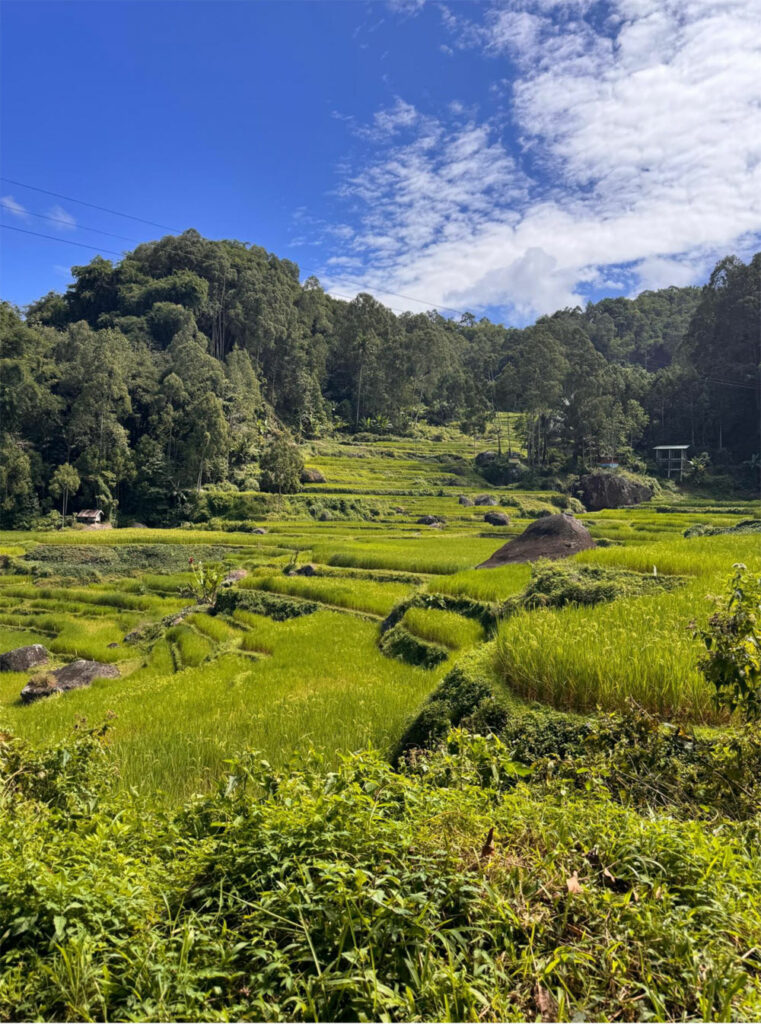
Rooster and buffalo, symbols of power
Society is organised hierarchically. The class of „feudals“, who own the rice fields, also hold the leadership within the family tribes and the village. They decide the fate of the village community. The house of the tribal leader not only has a wooden buffalo head hanging under the rafters, as most do, but also a rooster, the symbol of power.
The buffalo head may be hung on the house by all those who have performed the ceremonies of a wedding and a funeral with a corresponding number of guests. Only then is the house a real house in the sense of Toraj spirituality and the feudal system. The group below this are the „workers“, which refers to all those who take on „foreign labour“ to earn a living. In the past, slaves belonged to the third class in the feudal system. Since the beginning of the 19th century, when slavery was abolished, that class no longer exists. https://en.wikipedia.org/wiki/Torajan_people
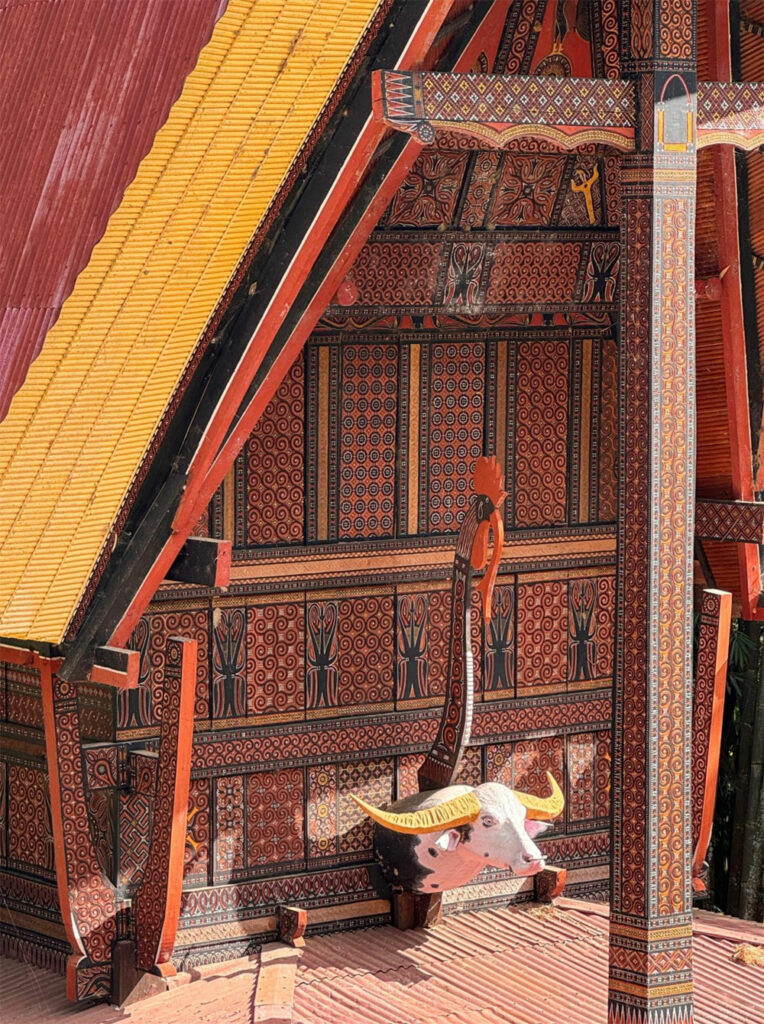
Funerals are the highlight of a person’s life cycle. The more opulent the ceremony and the more water buffalo slaughtered for it, the more respected the person was during their lifetime. Nothing works in Toraja without water buffalos. They are sold at large cattle markets. Albino buffalos with white skin patches and white horns are particularly expensive. Depending on their size and weight, you must invest a few thousand euros. The village community and the family put their money together to ensure that it is a dignified celebration and that the deceased is transported to the paradise of the Toraj.
We are allowed to attend a funeral service for an old lady of feudal decent. Five hundred people have gathered to honour the deceased. Her coffin has been laid out and decorated with dignity. The guests honour the family by bringing food and sweets and assuring the family members of their sympathy. The ceremony is both dignified and cheerful, occasionally interrupted by the bleating of tethered water buffalos. We march in a defilé to the family’s reception pavilion, passing girls and boys in traditional costume.
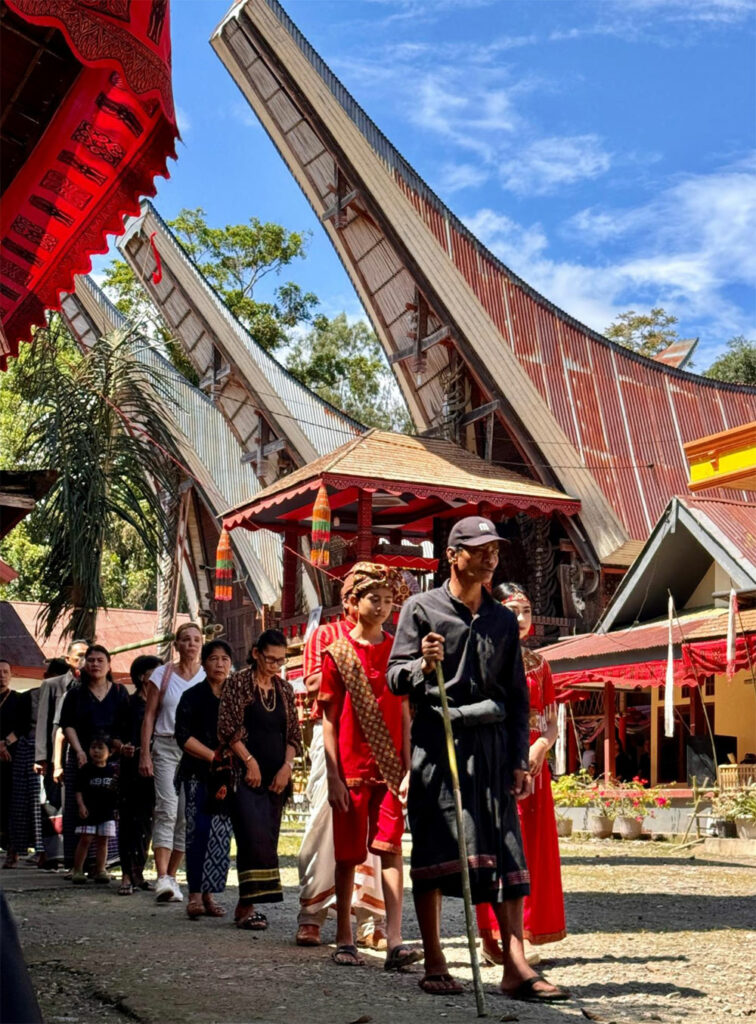
We are greeted over loudspeakers as the guests from „Jerman“ and everyone is delighted that we are taking part in this celebration. The guests and family members have travelled from all over, some even from Jakarta. We try to get a picture of who belongs to whom and what is happening when. I am carried away by the pictures, the smells of the many dishes and the loud music and announcements. Later, we walk back to another pavilion, where we are introduced to other family members and served grilled meat from the slaughtered water buffalos and pigs. Together with rice, everything is eaten by hand. It tastes good and everyone tucks in with relish.
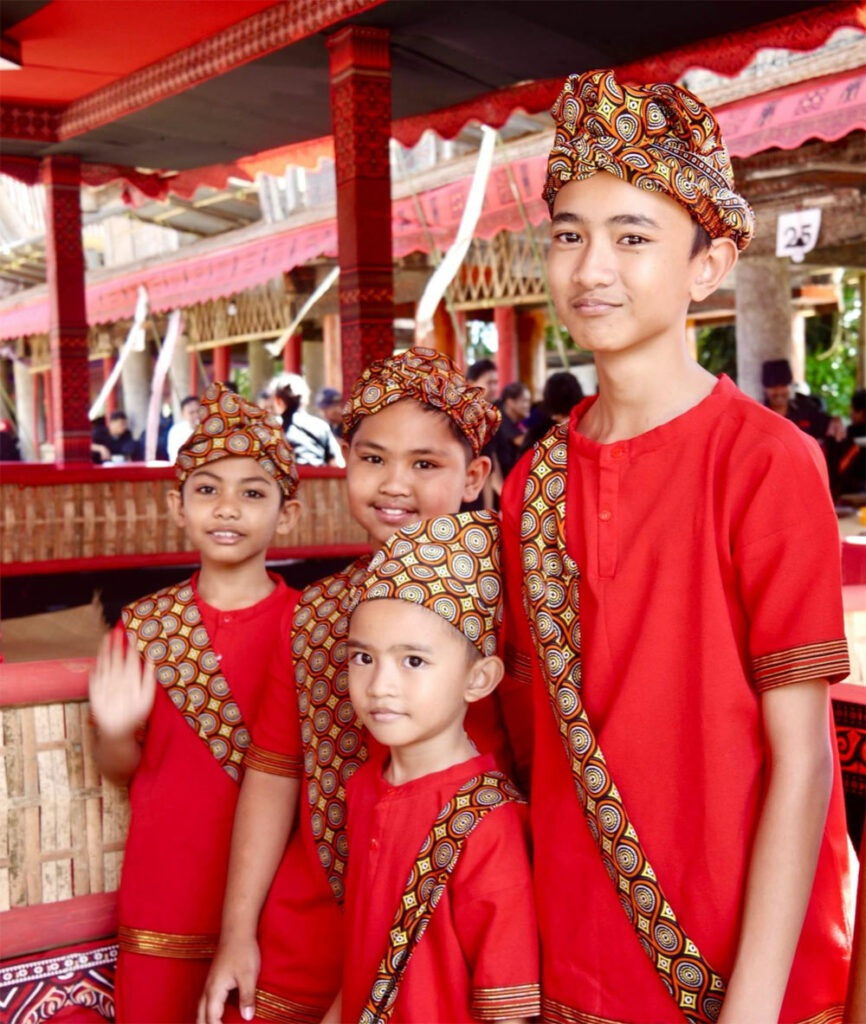
According to Toraj beliefs, the dead may not be buried in the ground because „Mother Earth“ gives all life. They are buried in rock tombs, mausoleums and open-air coffins, which are hung on rock faces or in caves. The burial sites are impressively decorated with doll artefacts representing the dead. Artfully decorated doors to the rock tombs show the respect of the following generations, who are also buried in the same sites. A rock tomb is hollowed out by hand. It takes about a year to complete such a „burial cave“. There is room for many generations of family members. We are very surprised when we hear how expensive such a burial site is. Each village has its own burial ground, which may only be used by the villagers. Unmarried people are buried in a mass grave, separated by gender.
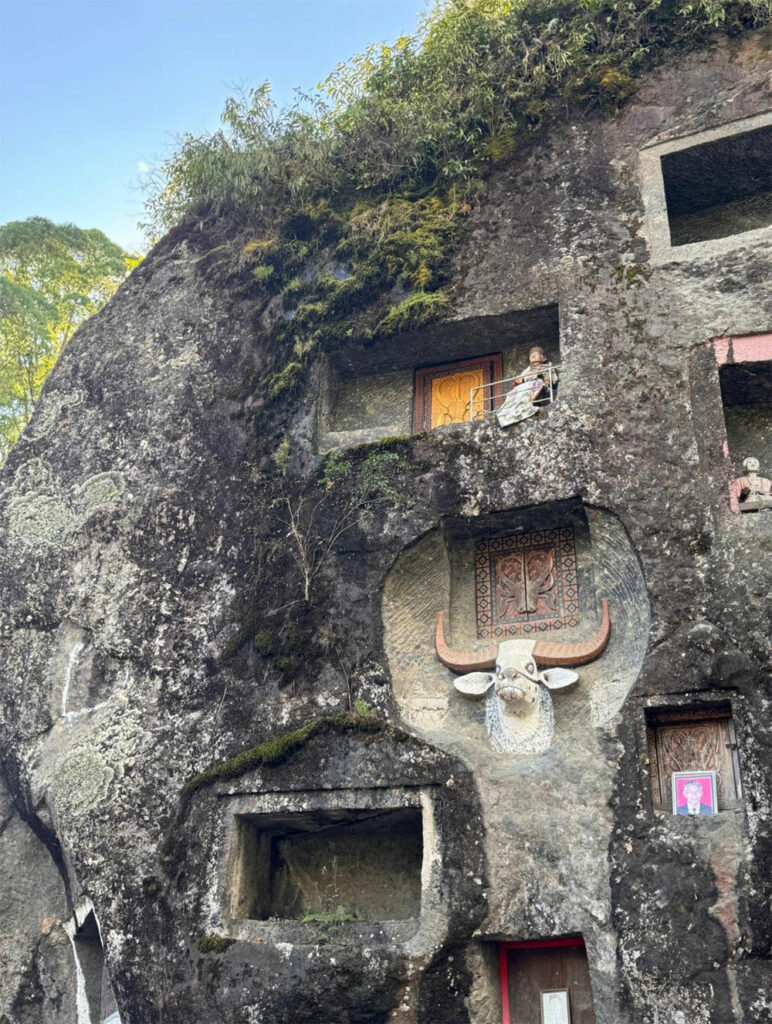
The pictures are impressive, the stories colourful and lively. The Toraj Valley is full of activity, despite the arduous journey over steep, potholed mountain roads. The cattle markets are crowded, new wooden houses are being built in the villages and many young children swarm the streets and schools.
When we visit the first burial site in Kete Ketsu, we are surrounded by a group of children and their teachers. The children have index cards in their hands. The teachers ask us if we want to talk with the children in English. The children need to learn to communicate better in the foreign language. It would be important for their future and that of the country if they could speak to people like us. We are very happy to do this and laugh with the children about their career aspirations and favourite football players. They know more German players than we do. It wouldn’t have been any different on a German school playground.


